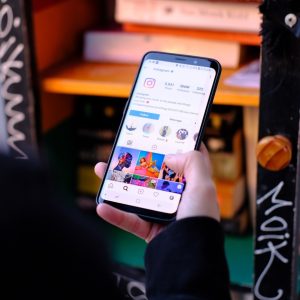We all want more leads, especially the right leads. Because without them, there’s no pipeline, no sales, and no growth. But let’s face it: digital marketing can feel overwhelming. Between the ever-changing algorithms, complex tools, and conflicting advice, it’s easy to get stuck or spend time on tactics that don’t work for your business. Let’s face it, your digital marketing plan needs to be customized to fit your business objectives.
The truth? There’s no “one-size-fits-all” solution to lead generation. However, there are a few proven, high-impact strategies that consistently deliver results when executed correctly. In this post, we’ll walk you through three of the most effective ways to generate leads online today, so you can cut through the noise, attract qualified prospects, and start converting interest into revenue.

Start with Buyer Personas
If you’re thinking, “What the heck is a buyer persona?” you’re not alone. A buyer persona is a semi-fictional representation of your ideal customer, based on real data and educated assumptions. It’s the foundation of any smart marketing strategy.
Without a clear understanding of who you’re trying to reach, your marketing is essentially a shot in the dark, like tossing flyers off your office roof and hoping the right person grabs one.
To get started, conduct some basic market research:
- Use surveys or polls on social media to gather demographic info like age, job title, industry, education level, and location.
- Talk to your sales and customer service teams—they often have a good pulse on who your best-fit customers are.
- Look at your website analytics, CRM data, and social media insights for patterns in user behavior.
Once you begin spotting trends, build out one or more personas, and give each one a name. For example: “Marketing Manager Molly” or “Operations Director Dave.” Giving your personas a name and a face makes them easier for your team to relate to when crafting campaigns.
Creating buyer personas takes a little effort upfront, but it pays off. With clearly defined personas, your messaging becomes more targeted, your content becomes more relevant, and your leads become more qualified.
Rank Higher in Search Engines
Be honest, when was the last time you Googled something and clicked on a result from page two? Or even scrolled all the way to the bottom of page one? If you’re like most people, it rarely happens.
The truth is: if you’re not near the top of the search results, you’re basically invisible.
That’s where search engine optimization (SEO) comes in. It’s one of the most powerful tools for generating organic leads, helping your website appear higher in search results when potential customers are actively looking for what you offer.
Start with Keyword Research
To climb the rankings, you need to understand what your audience is searching for. Keyword research helps you identify high-value terms related to your business, and shows you the search volume, competition level, and intent behind each one.
Here’s the key distinction:
- Broad keywords (e.g., “running sneakers”) generate millions of results and attract people at the very top of the funnel—curious, but not ready to buy.
- Long-tail keywords (e.g., “best running sneakers for flat feet 2025”) are more specific and often used by people who are much closer to making a purchase.
If you’re a smaller brand, you probably won’t outrank giants like Nike or Dick’s Sporting Goods for a term like “running sneakers.” But you can absolutely compete in niche or localized searches that are more relevant to your exact audience.
Relevance Over Volume
It’s tempting to chase keywords with high search volume, but relevance beats reach. Ranking #1 for a keyword that has nothing to do with your offering won’t drive meaningful leads. Focus on terms your audience would actually use when they’re ready to engage or make a purchase.
Pro tip: Tools like Google Keyword Planner, SEMrush, or Ubersuggest can help you evaluate keywords based on:
- Monthly search volume
- Cost-per-click (CPC)
- Competitive difficulty
- Buyer intent
SEO is a long game, but when done right, it’s one of the most cost-effective ways to attract qualified traffic to your website, without having to pay for every click.
Keep User Experience in Mind
It might sound obvious, but it’s something many businesses still miss: always view your website through the eyes of the user.
Ask yourself: If I were a first-time visitor, would I immediately understand what this company does? Can I easily find what I’m looking for? Does this experience feel trustworthy and helpful?
Search engines like Google are laser-focused on providing the best possible experience to their users. That means they favor websites that deliver content that matches the searcher’s intent, load quickly, and are easy to navigate, especially on mobile devices.
Prioritize Content Relevance
High-quality, accurate, and helpful content is critical. Your pages should directly answer the questions your target audience is asking. If your content doesn’t match what people are searching for—or worse, if it’s outdated or misleading, Google will deprioritize it.
Think: Is your content solving problems? Or just selling?
Helpful wins. Every time.
Design for Usability
User experience (UX) isn’t just about aesthetics; it’s about functionality and flow. If your site is cluttered, confusing, or slow to load, visitors will bounce… fast. And when users bounce, Google takes note, and your rankings suffer.
A smooth, modern website makes it easier for users to:
- Understand what you offer
- Take action (fill out a form, contact you, download content)
- Share or return later
In the context of lead generation, every click matters. One bad experience could cost you a conversion or a long-term customer.
Pro Tip:
For a deeper dive into SEO best practices (especially if you’re just getting started), we recommend checking out Moz’s Beginner’s Guide to SEO. It’s a great resource that breaks everything down in plain English.
 Use Google Ads Strategically
Use Google Ads Strategically
Google Ads (formerly AdWords) is one of the most effective ways to drive targeted traffic to your site, but only if you choose the right campaign type for your goals. Not every campaign works the same way, and each is designed to reach users at a different stage of the buying journey.
Here’s a breakdown of the main Google Ads campaign types and how they support lead generation:
Search Network Campaigns
These are the text ads you see at the top of Google’s search results. They appear when someone searches for keywords relevant to your products or services, meaning they’re actively looking for a solution.
These users are typically at the bottom of the funnel, making them more likely to convert.
Bonus tip: On mobile, search ads often take up the entire screen. This visibility can drive more clicks, especially when combined with a solid SEO strategy. Combining PPC and SEO creates more brand touchpoints and fosters trust with your audience.
Display Network Campaigns
The Google Display Network spans millions of websites, apps, and YouTube channels. Display ads are visual and appear on relevant pages, even if the viewer isn’t actively searching at that moment.
These campaigns are great for:
- Top-of-funnel awareness
- Visually appealing products or services
- Brand visibility and retargeting
Display ads also support remarketing, allowing you to re-engage people who have already visited your website. And with responsive display ads, your creative automatically adjusts to match the look and feel of the site it appears on.
Video Campaigns
Video ads, most often run on YouTube, let you connect with your audience through sight, sound, and storytelling. They’re great for:
- Raising brand awareness
- Highlighting your value proposition
- Reaching users based on demographics, interests, search behavior, and even life events
Video campaigns offer low cost-per-view, making them a smart play for budget-conscious advertisers. And because they’re hosted on YouTube and its partner network, you get massive reach and targeting precision.
Site-Seeker is part of the top 4% of all Google Ads agencies and a certified Google Partner.
We’re currently offering a free 30-second video ad production for new clients who sign up for a trial ad program. It’s a limited-time offer—contact us using the form below to learn more.
Shopping Campaigns
If you sell products online, Google Shopping Ads are a must. These product-based ads show up in Google’s Shopping tab and search results, featuring a product image, price, and description, all before a user clicks.
Because users can assess your product before clicking, Shopping Ads tend to attract higher-quality leads who are closer to making a purchase.
You’ll need to connect your Google Ads account with Google Merchant Center to get started.
Local Campaigns
Local campaigns help you reach customers who are searching for nearby businesses. Your ad can appear on Google Maps, Search, YouTube, and across the Display Network—along with key info like:
- Business location
- Store hours
- Reviews
- Directions
These campaigns are particularly useful for brick-and-mortar businesses seeking to increase foot traffic and local visibility.
If you’ve ever searched “pizza near me” while traveling, you’ve probably clicked one of these.
The Difference in Results? Huge.
Running a Google Ads campaign isn’t just about clicking “Go.” When managed properly, the results can be game-changing.
Take it from one of our clients: after Site-Seeker took over their campaign management, they saw a 440% increase in leads compared to when they ran it in-house over the same time period.
Get Social: Use Social Media to Generate Leads
Social media isn’t just for brand awareness anymore; it’s a powerful, cost-effective channel for generating real, qualified leads. But success doesn’t come from posting at random. It’s about choosing the right platforms for your audience and using each one strategically.
Let’s break down how the most popular networks support lead generation:
Facebook: Precision Targeting at Scale
Facebook offers one of the most advanced ad targeting systems available. You can define your audience by:
- Age
- Location
- Gender
- Interests
- Behaviors
- Job titles and more
The result? You’re not wasting money reaching people who aren’t a fit. Instead, you’re putting ads directly in front of the people most likely to convert, based on your buyer personas.
Example:
If you’re selling running sneakers, you might target men aged 21–40 who live within 15 miles of your store and have interests in fitness, marathons, or outdoor sports.
Pro Tip: Facebook’s Lead Ads are designed to capture user information directly in-platform without needing them to visit your site, making the lead gen process fast and frictionless.
 Instagram: Visual Storytelling with High Engagement
Instagram: Visual Storytelling with High Engagement
Instagram is built around visuals, and that’s what makes it ideal for products or services that are visually appealing.
Ask yourself:
- Do I have strong photo or video content?
- Am I targeting users aged 18–35, particularly young women?
- Can I showcase lifestyle, beauty, fashion, food, or design-related offerings?
If yes, Instagram is your playground.
To boost lead generation:
- Use relevant hashtags to expand reach (but don’t overdo it)
- Add strong CTAs in Stories (like “Swipe Up” or “DM us to learn more”)
- Use the link in your bio to drive traffic to gated landing pages or lead capture forms
- Run Instagram Lead Ads, which function similarly to Facebook’s and can be managed in the same platform
Pro Tip: Encouraging users to tag a friend in a giveaway or comment to enter a contest can increase reach and engagement, fast.
LinkedIn: The B2B Powerhouse
If you’re a B2B company, LinkedIn is the place to be. According to LinkedIn, 80% of all B2B leads from social media come from their platform. That’s not a stat to ignore.
It’s ideal for:
- Reaching business decision-makers
- Promoting thought leadership content
- Running highly targeted ads by industry, job title, company size, or even specific companies
To capture leads on LinkedIn:
- Share industry insights, blog posts, and case studies
- Promote whitepapers, checklists, or webinars with gated downloads
- Use LinkedIn Lead Gen Forms, ads that auto-fill a user’s profile data into a form
Pro Tip: The more helpful your content, the better your chances of collecting high-quality leads who are already in research mode.
Put It All Together
Phew, we’ve covered a lot! From buyer personas and SEO to social media and paid ads, there’s no shortage of ways to generate leads online. And while digital marketing can feel overwhelming at first, the potential payoff is undeniable when it’s done right.
You don’t have to master it all on your own. At Site-Seeker, we help businesses like yours turn digital chaos into clear, results-driven strategies. Whether you’re just getting started or looking to level up, our team can help you attract the right leads, nurture them through the funnel, and drive meaningful growth.
Let’s chat! Explore our services to see how we can support your marketing goals.
 Use Google Ads Strategically
Use Google Ads Strategically Instagram: Visual Storytelling with High Engagement
Instagram: Visual Storytelling with High Engagement